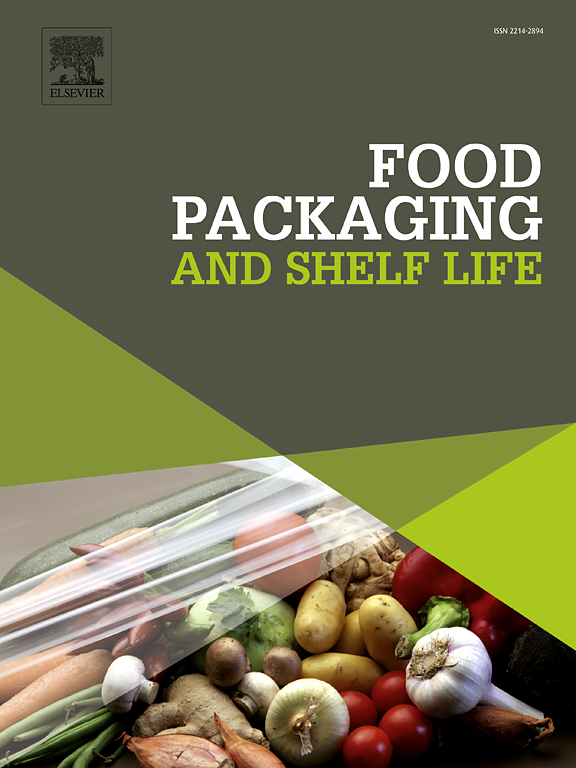Development of aerogel absorbent pads based on plasma-treated citrus pectin/chitosan for chilled pork preservation
IF 10.6
1区 农林科学
Q1 FOOD SCIENCE & TECHNOLOGY
引用次数: 0
Abstract
This study examined the effects of nitrogen and air plasma-modified pectin on its water absorption performance and developed an environmentally friendly absorbent pad for preserving chilled pork through the cross-linking of pectin and chitosan. It has been shown that the treatment duration of air and nitrogen plasma modifies the pectin structure. Specifically, nitrogen plasma treatment for 90 seconds significantly reduces the DE of pectin and increases its hydroxyl, carboxyl, and uronic acid content, thereby enhancing pectin's solubility and hydration capacity. Additionally, the aerogel formed from nitrogen plasma-modified pectin and chitosan exhibits a denser pore size distribution compared to air plasma-modified pectin. Adsorption curve results indicate that nitrogen plasma-treated pectin increases the aerogel's swelling rate by 61.65 % and adsorption rate by 28.33 %. In summary, the aerogel modified with nitrogen plasma-treated pectin effectively reduces TVBN levels in pork during a 12-day storage period, maintaining them below 15 mg/100 g, while the control group's TVBN exceeded this level by the 8th day. This study examines the structural effects of different gas plasma modifications on pectin and explores the feasibility of using chitosan-synthesized aerogels as bioabsorbent pads for meat preservation.
等离子处理柑橘果胶/壳聚糖气凝胶冷鲜猪肉保鲜垫的研制
本研究考察了氮气和空气等离子体改性果胶对其吸水性能的影响,并通过果胶和壳聚糖的交联开发了一种环保型冷鲜猪肉保鲜剂。研究表明,空气和氮气等离子体处理时间的长短会改变果胶的结构。具体来说,氮气等离子体处理90 秒可显著降低果胶DE,增加果胶的羟基、羧基和醛酸含量,从而提高果胶的溶解度和水合能力。此外,与空气等离子体改性果胶相比,氮等离子体改性果胶和壳聚糖形成的气凝胶具有更致密的孔径分布。吸附曲线结果表明,经氮气等离子体处理的果胶可使气凝胶的溶胀率提高61.65 %,吸附率提高28.33 %。综上所述,经氮气等离子体处理的果胶改性气凝胶在12 d的贮藏期内有效降低了猪肉中TVBN的含量,使其保持在15 mg/100 g以下,而对照组的TVBN在第8天就超过了这一水平。本研究考察了不同气体等离子体改性对果胶的结构影响,并探讨了壳聚糖合成气凝胶作为肉类保存生物吸收垫的可行性。
本文章由计算机程序翻译,如有差异,请以英文原文为准。
求助全文
约1分钟内获得全文
求助全文
来源期刊

Food Packaging and Shelf Life
Agricultural and Biological Sciences-Food Science
CiteScore
14.00
自引率
8.80%
发文量
214
审稿时长
70 days
期刊介绍:
Food packaging is crucial for preserving food integrity throughout the distribution chain. It safeguards against contamination by physical, chemical, and biological agents, ensuring the safety and quality of processed foods. The evolution of novel food packaging, including modified atmosphere and active packaging, has extended shelf life, enhancing convenience for consumers. Shelf life, the duration a perishable item remains suitable for sale, use, or consumption, is intricately linked with food packaging, emphasizing its role in maintaining product quality and safety.
 求助内容:
求助内容: 应助结果提醒方式:
应助结果提醒方式:


